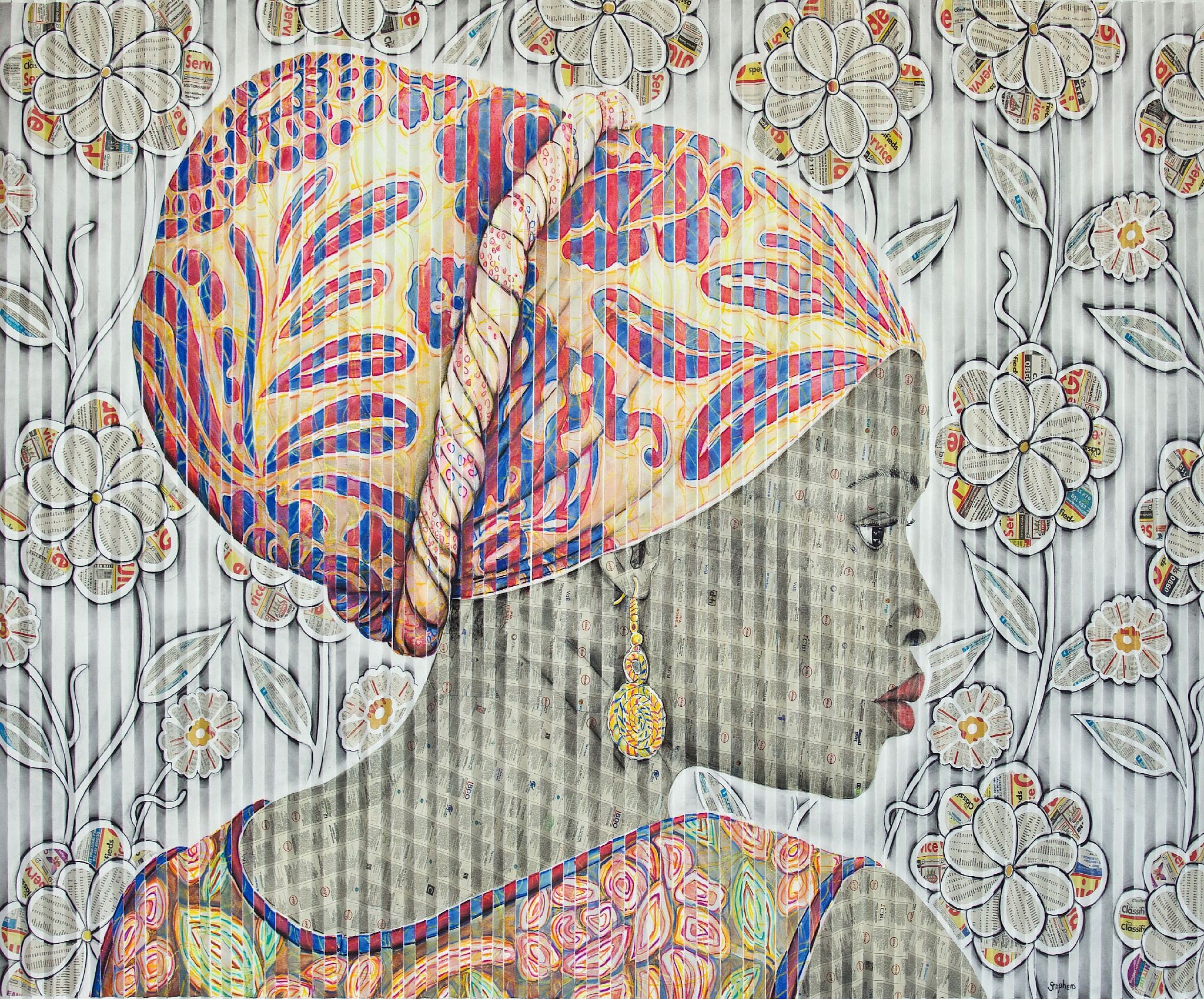PRESS RELEASE

GARY STEPHENS: Local
Sep 15 – Oct 3, 2020
“don’t ask where I’m from, ask where am I local”
This statement by renowned author, photographer and screenwriter, Taiye Selasi deeply resonated with artist Gary Stephens. Born in America, educated in Italy, former resident of Lagos and current inhabitant of Johannesburg, the question of where he “is from” becomes harder to answer as time passes.
Stephens explains, “The idea that where you interact with people, where shop keepers know your face, where you eat lunch, buy wax fabric, take gym class, attend art openings, these are the things that define you and give you commonalities.” Instead of using stereotyping labels to define where he is from, “a 58 year, old gay, white male from the USA” , he prefers: “my Joburg commute takes me across Joe Slovo , I grocery shop at the Bertrams Spar, I jog in Ellis Park, I buy Wax fabrics on Prichard street, I walk to the Rosebank mall…”
Stephens’ curiosity about urban African fashion led him into the textile markets in downtown Johannesburg where he immersed himself in the energy of the city and its inhabitants. There he met his models, bought his expansive collection of fabrics and accessories, and began to work with his models in creating portraits that celebrate urban African fashion. His work also references the architecture, the posters pasted on walls, the buzz of traffic ubiquitous in sprawling African cities.
His latest works depict his close network of models, all local to Johannesburg but emanating from countries across the African continent. The classic wax-print, or masai, fabric patterns popularly worn as head scarves, become abstracted and begin to spread across the entire work, like wallpapers, or instagram filters. Stephens has also revisited his interest in street art and posters, and collaged newsprint into these works - politics, advertisements, classifieds and crosswords become skin and fabric as he builds these contemporary portraits with the records of our daily lives.
Stephens feels it is important to openly engage with his choice to look at black African culture and fashion in South Africa. He has reflected on the question, is it ok to be inspired and make art about the beauty of another culture? The politics of portrayal is complex, and Stephens is aware of the history of cultural appropriation and exoticism of the black subject by white artists throughout art history. His is inspired by the cities he has lived in and visited across the African continent, the people, fashion, architecture and urban culture and his work reflects that deep appreciation and sincere affection for the cities, and communities, where he finds himself “local”.



